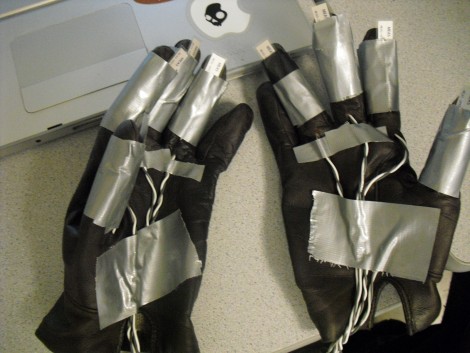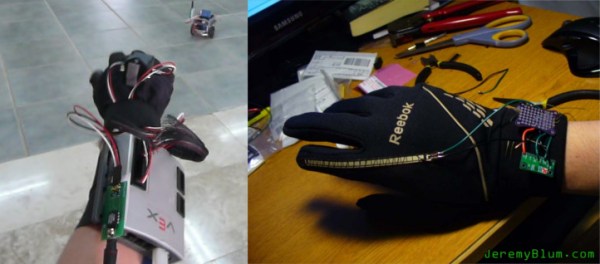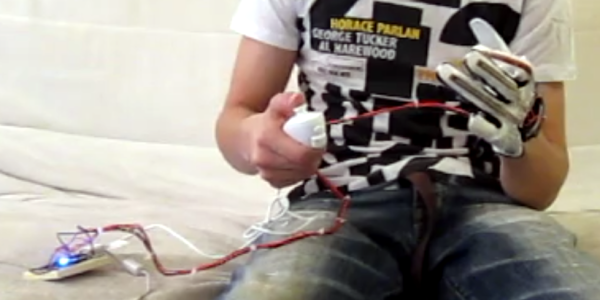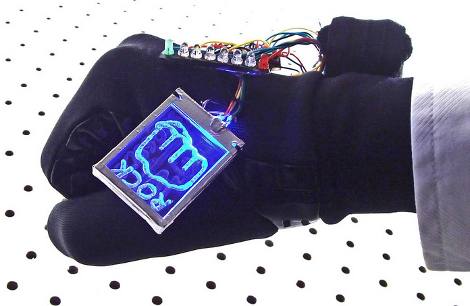
We’re being inundated with glove-based peripheral hacks. This is another final project from Cornell, keyboard out of the equation by adding 8 piezo sensors to a pair of gloves thereby shunning the pinky finger. We like this one because it’s easy to build and the midi interface implementation is well documented if you want to build your own.
As you can see after the break, this is easy to use with music software like Garage Band because it is a standard MIDI device. In addition, a MATLAB interface allows for custom mapping in case you want to change what each finger does.
We remember our first introduction to glove-based performances with Tod Machover’s Bug Mudra many years ago. We hope the music input hacks we’re seeing will lead to a whole new generation of music innovators.
















